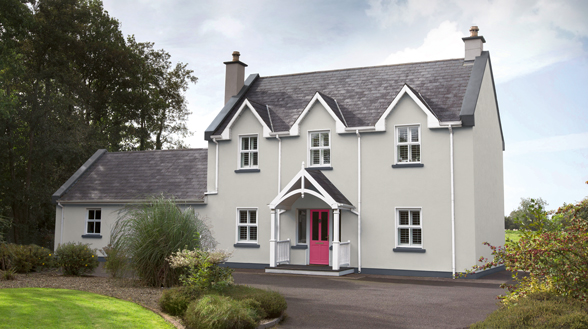Good to see you!
Welcome to Dulux
Terms & Conditions
Registration complete
Successfully registered, please login
Registration complete
Forgotten your password?
Please enter email address associated to your account
Change Password
Password changed successfully.
Request sent!
Delete Account
The surprisingly striking feature which when maintained properly, will save you money.

A fascia tends to be a feature everyone can recognise but not often be able to name, unless of-course they are in the building industry.
Fascias, are the trim boards at the top of the exterior walls of a house. Taking care of these, as well as their underside, known as the soffit, will give your home an instant facelift. A coat of paint is the most simple and effective way to improve the appearance and value of your home. While maintaining your fascia and soffit will also prevent decay and mould, issues which could cause future costs for you as the homeowner. In this article, we will examine the most effective way to freshen up your fascia and soffit.
To start off with, it is good to remember that ultimately your paint job will only be as superb as your preparation. The first thing to do is make sure the surfaces to be painted are clean and dry. Sanding the wood to it’s original state and dusting it off will give you the cleanest surface. If the surface you are treating is from pre-1960, take special precautions as the original paint may contain lead.
The next step is to treat any mould with Weathershield Multi Surface Fungicidal Wash and replace any rotten wood with new timber. The damp Irish weather creates perfect conditions for mould and all members of it’s family to grow, such as algae, lichen and moss, so this treatment is absolutely key for an Irish property.
Next, you will rub down previously painted surfaces, using ‘wet flatting’ methods and then wipe with a lint free cloth. Application of knotting solution will treat any remaining knots in the wood. Prime all new or bare wood with two coats of Cuprinol Wood Preserver Clear and any bare metal with a coat of Dulux Trade Metal Primer. Wood filler can then be used to fill in any surface defects. An interesting fact about new joinery is that it is often factory primed with a stain base coat and these can erode quickly when left exposed.
At this point you are at the fun part. Your application of paint should be brush only, not spray and it’s best not to use in temperatures under 10 degrees celcius or if there is a likelihood of rain or fog. This may seem obvious to point out, but the wrong conditions could ruin all your hard work.
How many coats do you need to apply? We recommend two coats of Weathershield Quick Dry Exterior Undercoat to all primed wood, followed by one coat of Weathershield Quick Dry Exterior Satin. If the change of colour you are creating is dramatic, you might need to double down and apply two coats.
Allow a minimum of 2 hours before adding a coat of Weathershield Quick Dry Exterior Undercoat. When painting resinous wood or woodwork with a history of blistering, it is advisable to use light colours only.
When painting areas such as plastic rainwater goods, apply one coat of Dulux Trade Super Grip Primer followed by two coats of Weathershield Quick Dry Exterior Satinwood, allowing appropriate drying times between coats.
If you have reached this point then congratulations, you’ve added aesthetic value to your home. Fascias create an interesting feature to the roof of your home but just as importantly you have protected your roof and foundations against the elements and potentially saved yourself expensive repair work in the future.
All materials we recommended in this piece are available in Dulux Stores around the county. Find your nearest at https://www.dulux.ie/
Add a new job
Add a new job
Edit a job
Delete job
Are you sure? All notes, photos and saved items will be deleted.
Save colour
Save to My Workspace
Save product
Save job